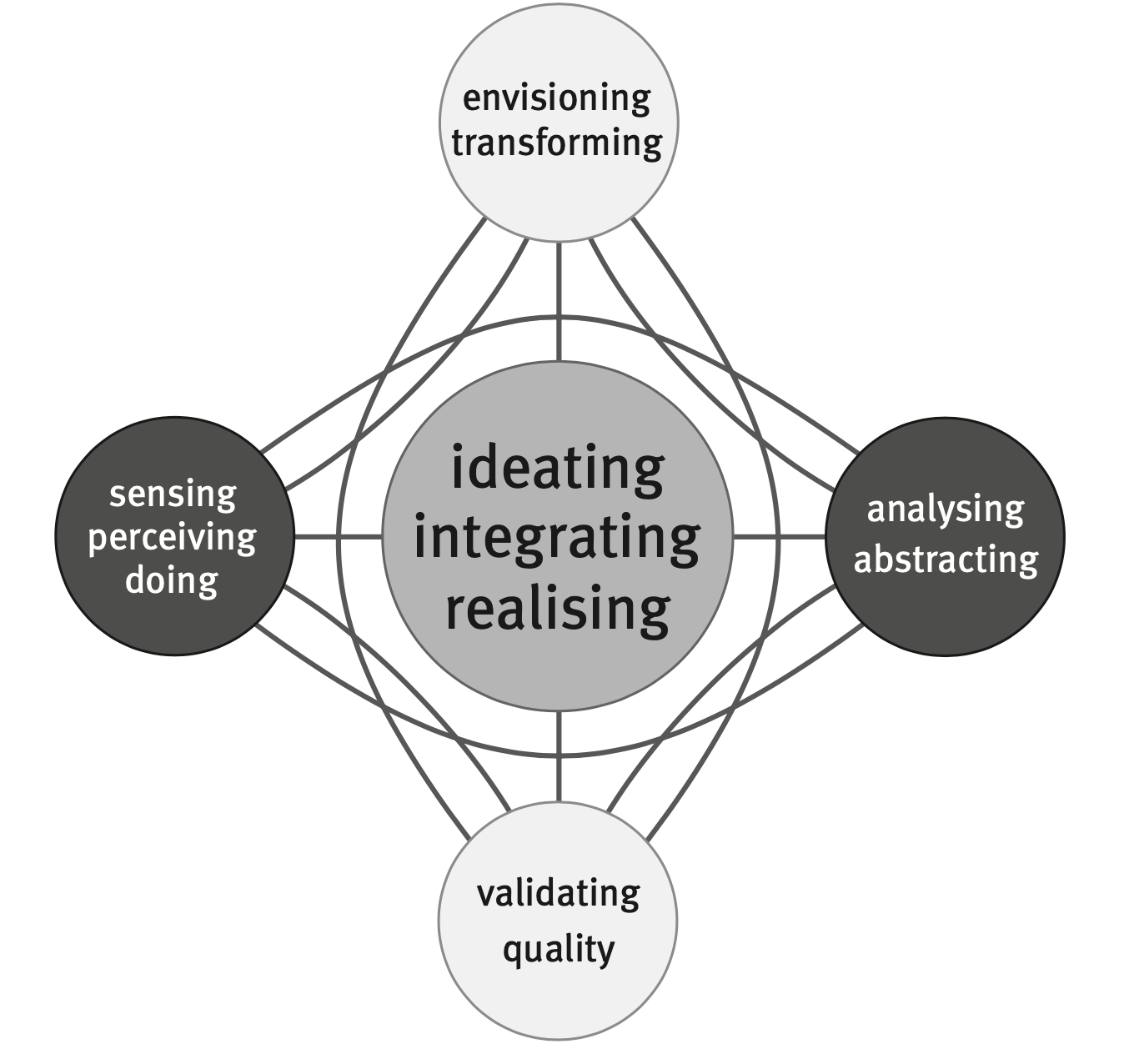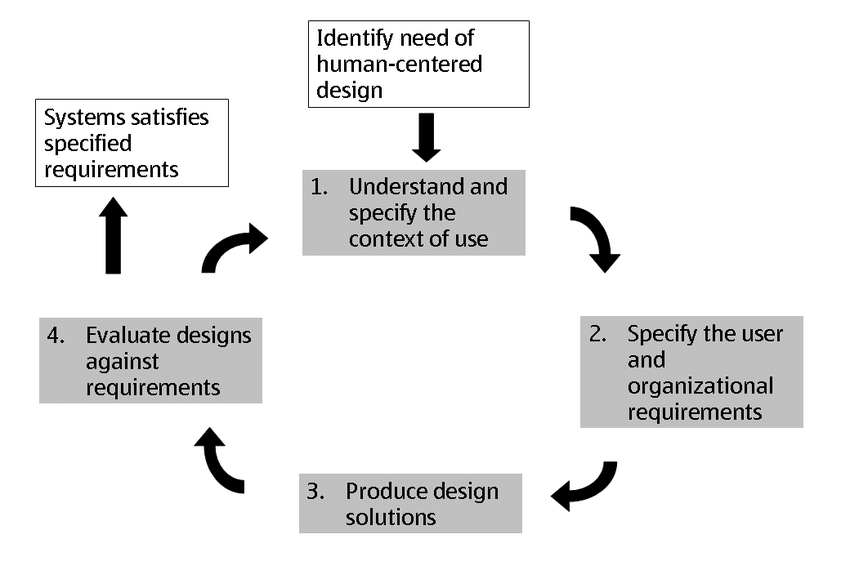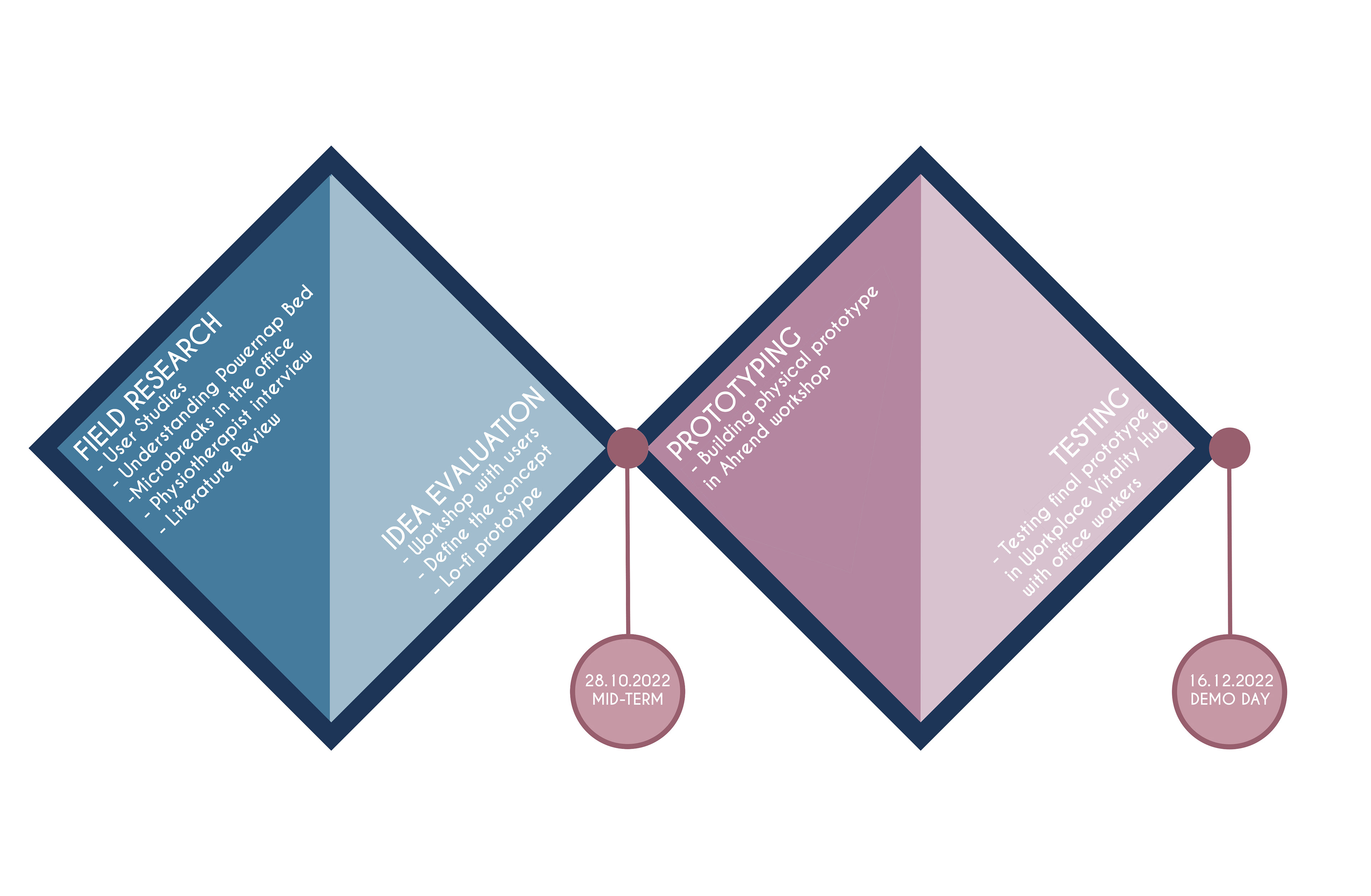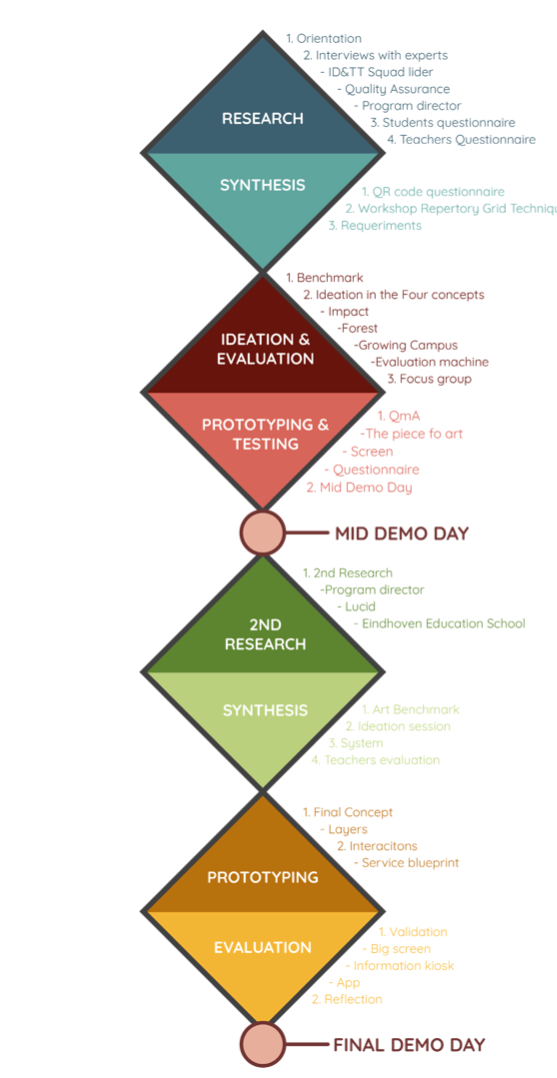When arriving at TU/e I did not pay attention to the process I am following. It seemed linear and I was always following the same steps or guidelines from my superiors. Being in control of my process and keeping track of it was a new skill for me.
I managed to try different processes during my Masters. With QmA team, we followed two Double Diamonds (one for each quartile finished with a demo presentation) (British Design Council, 2015) and I also took this approach during my internship with Ahrend. It structured the work very well, but did not facilitate my activities frequently changing or more explorative approach towards designing.
During my M12 research project, I followed Research through design (Zimmerman et al., 2014). The idea of documenting and drawing knowledge from each step was very interesting and it gave me the belief that all steps are valuable even if they are not continued or the direction changes.
The process I like the most and which helped me to choose the next steps and reassured me of my own path was the Reflective transformative design process (Hummels & Frens, 2009). It facilitated frequent changes of activities and helped to still be in control of it. The division between drives and strategies helped me to choose the right next steps, depending on what I needed in the process. I used it in my Final Master Project, with some activities inspired by the User-Centered Design process ISO13407 (ISO, 1999).






British Design Council. (2015). What is the framework for innovation? Design Council’s evolved Double Diamond. Retrieved from: https://www.designcouncil.org.uk/news-opinion/what-framework- innovation-design-councils-evolved-double-diamond
Hummels, C., & Frens, J. (2009). The reflective transformative design process. In CHI’09 Extended Abstracts on Human Factors in Computing Systems (pp. 2655- 2658).
International Organization for Standardization. (1999). Human-centered design processes for interactive system (ISO13407: 1999). Geneva: ISO.
Zimmerman, J., & Forlizzi, J. (2014). Research through design in HCI. In Ways of Knowing in HCI (pp. 167-189). Springer, New York, NY.